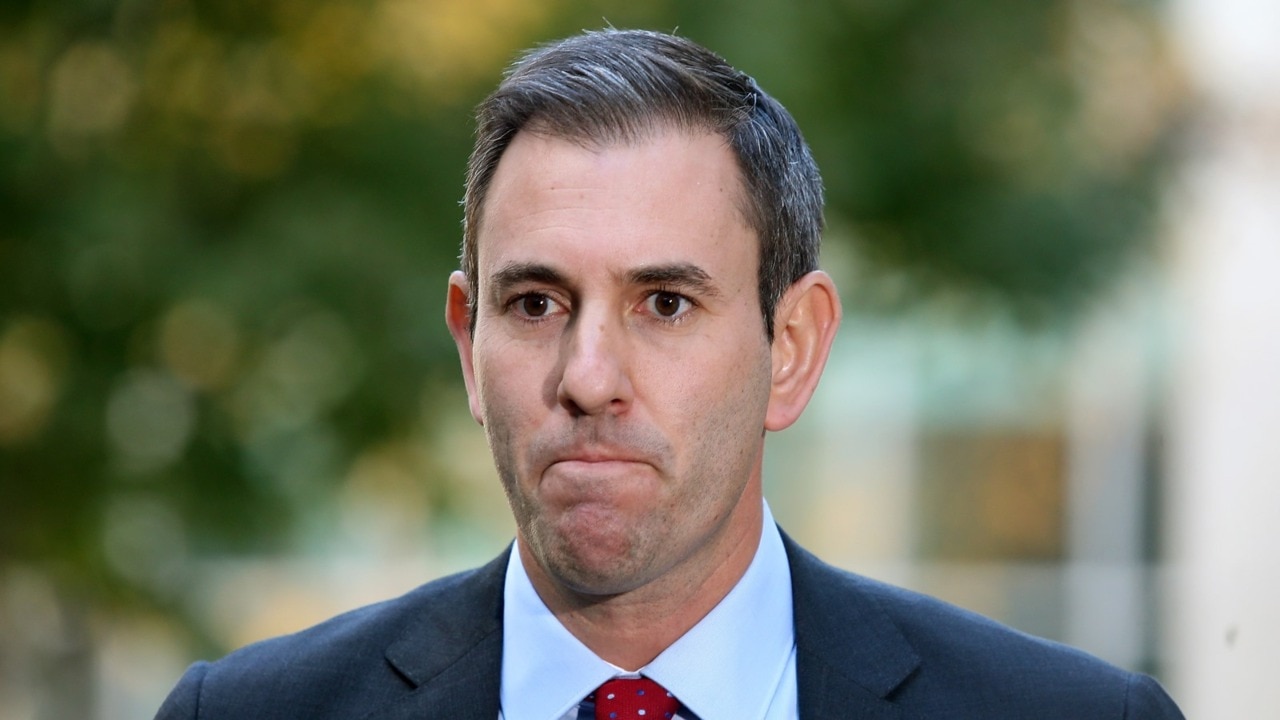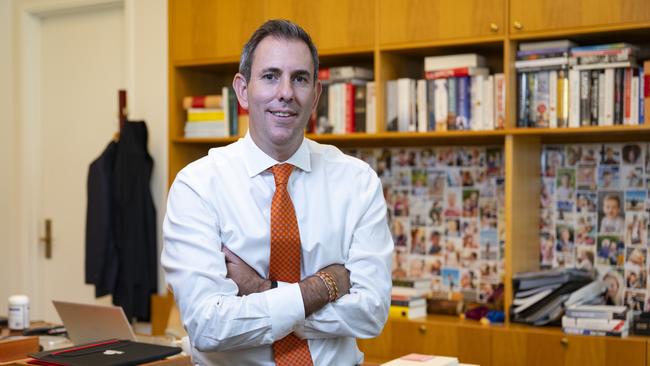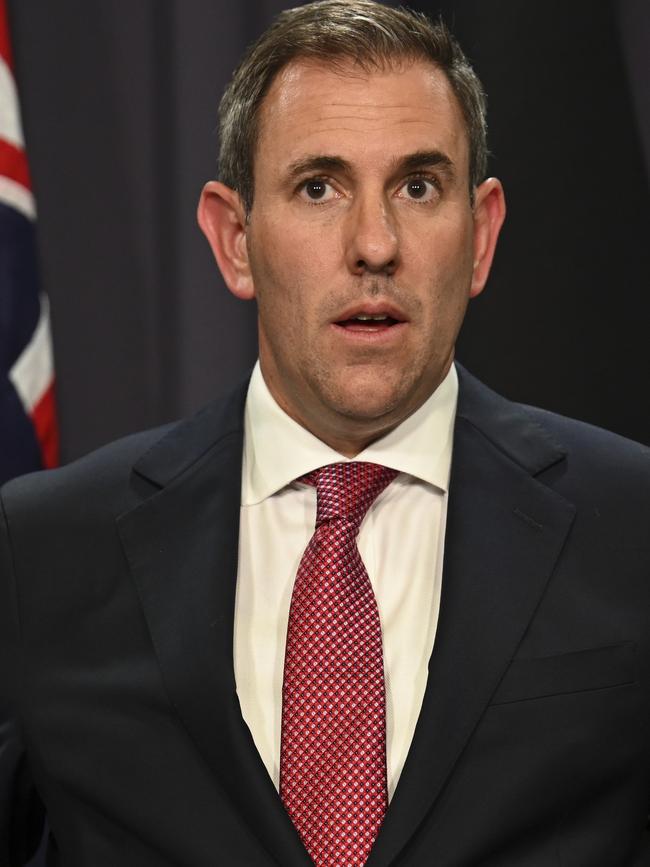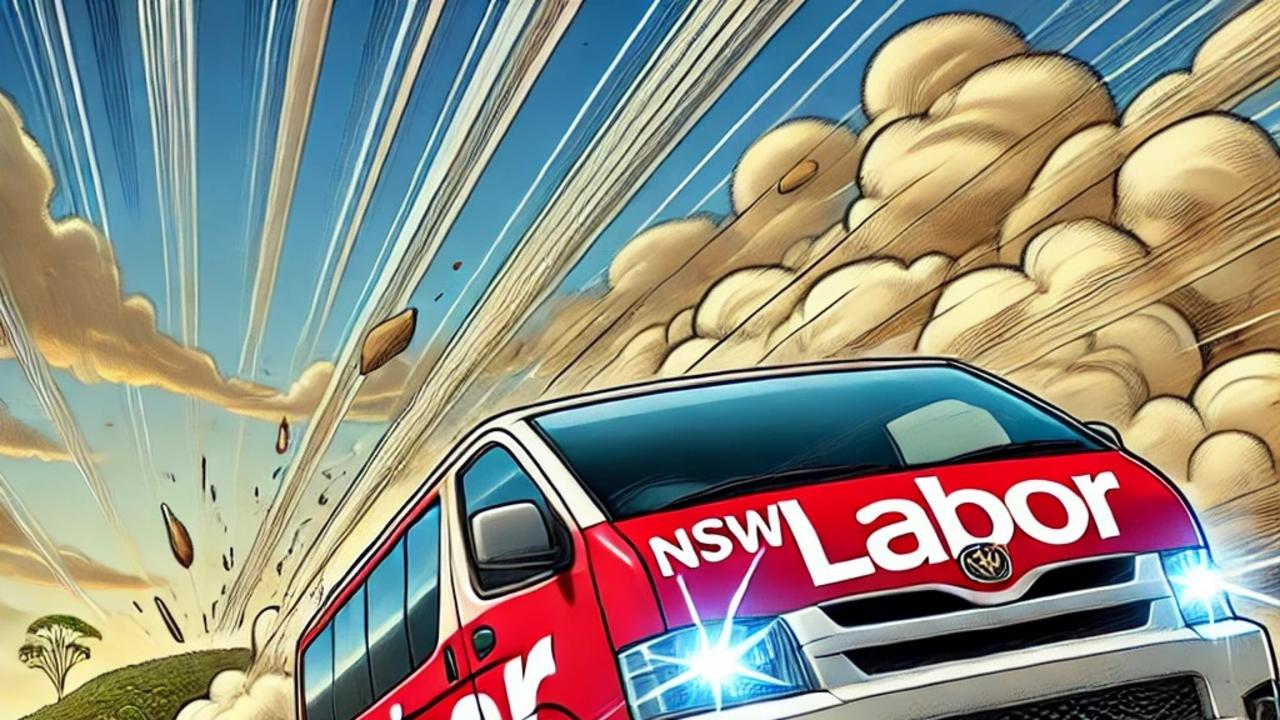Modern Jim Chalmers is aiming to maximise our middle with the three M’s and four R’s
Jim Chalmers has touted “modernization”, “maximization”, and “middle Australia” while saying his goal is to “renew and reform, not just repair and restore.” James Morrow breaks down what it all means.

Opinion
Don't miss out on the headlines from Opinion. Followed categories will be added to My News.
All hail the three M’s!
Let the guiding light of the four R’s illuminate our path!
So sayeth Treasurer Jim Chalmers, who has penned a piece in The Australian touting “modernization”, “maximization”, and “middle Australia” as his key targets as he helps guide the economy towards an election that could be called as soon as late next year.
Chalmers, by far one of the most personable members of the Albanese front bench, says his goal is to “renew and reform, not just repair and restore.”
This is, to be sure, some pretty clever alliteration that frankly wouldn’t be out of place in a speech by The Simpsons’ Mayor Quimby.

After all, really, who can be against any of those Rs or Ms?
But let us not be unfair to the Treasurer, who has gotten back in the public intellectual ring after taking a fair amount of flak earlier this year (even lefty website Crikey! got in a kick) after he published his Heraclitus-quoting essay almost a year ago in The Monthly.
Even if he has wound back the classical references, Dr Chalmers’ modernising vision suffers from two big blindspots.
First, for anyone Gen X or older, his rhetoric borrows so much from Tony Blair that one wonders if there is a hidden cache of WMDs waiting to be discovered (or not).
Second, and perhaps more cripplingly, it suggests that the government is now so beholden to its own processes and ideologies, and that the nation is so wedded to the economics of “everybody gets a prize”, that real reform in the style of Howard, Hawke and Keating is now all but impossible.

This would explain why another key M word, “merit”, failed to make the cut, though a few in Cabinet quietly carry the torch for the oft-maligned virtue.
Meanwhile by shifting the emphasis from reform (i.e., winners and losers) to modernization (who could be against that?) the politics become a lot easier.
The only trouble is that the reality stays the same.
Some things, of course, need to be modernized.
Dr Chalmers refers to “upgrading our payments system, and supporting competition in clearing and settlement,” which is all to the good.
And we all do need to be better set up for whatever this Police Academy sequel to the 20th century has in store for us.
Things get more gnarly however when talking about specific things like tax and inflation.
It’s one thing to call for making the system more modern.
But what does that mean in world where inflation remains sticky, recession-masking immigration remains high despite the claims of Clare O’Neil and Andrew Giles, and Australians are paying more tax than ever?
While it is still an open question as to whether the government maintains its commitment to give taxpayers the Stage 3 tax cuts they were promised as a partial payback against bracket creep, none of what the Treasurer has suggested actually looks like hard reform.
Real reform – not just “modernisation” – would involve, say, indexing tax brackets to inflation so that workers are not penalised as their wages increase to meet the cost of living.

Likewise the push to “modernise” the energy system by going hell bent for wind and solar without countenancing any talk of nuclear was smacked down pretty comprehensively in Dubai this week.
Domestically, replacing energy-dense coal and gas with solar and wind and transmission lines will be hugely disruptive and require massive over-investment to keep the grid stable.
Internationally, the thought that we could replace our fossil fuel exports with solar and wind energy is a fool’s errand.
Move through the list.
More housing? Great, but throwing money at problems through dubious models like a housing “future fund” are hardly new ideas.
In fact, other coutnries that have tried similar vehicles have found they’ve barely been able to build a house.
And when combined with the push to densify our cities to make room for historically high immigration – which means trading the old promise of owning a family home for a build to rent apartment in the sky – many voters will question whether this is really an improvement in “quality of life”.
Dr Chalmers’ call to modernise “capital flows … and mobilising private capital for investors” fits into this narrative: In a report released this week Savills Australia expects investor cash to pour into the build to rent sector because of “population growth” and “limited supply of housing.”
A cynic would say this is modernising the Australian dream right out of existence.
Likewise, more subsidies for cost of living relief for everything from energy to childcare, which Dr Chalmers touted and continues to tout, also feel less like modern improvements as Ponzi schemes.
Again, the net zero push has made power more expensive, in no small part by driving coal operators out of the market.
Would it not be more expensive to stop making power more expensive in the first place?
And perhaps to even consider whether in a time when we are importing the workers who will care for us in old age we should be encouraging parenthood not by paying people to offload their kids, but stay at home with them instead?
So while it is all very good to talk modernization, reform may be a harder task – but one that will survive better when it comes into inevitable contact with reality.





